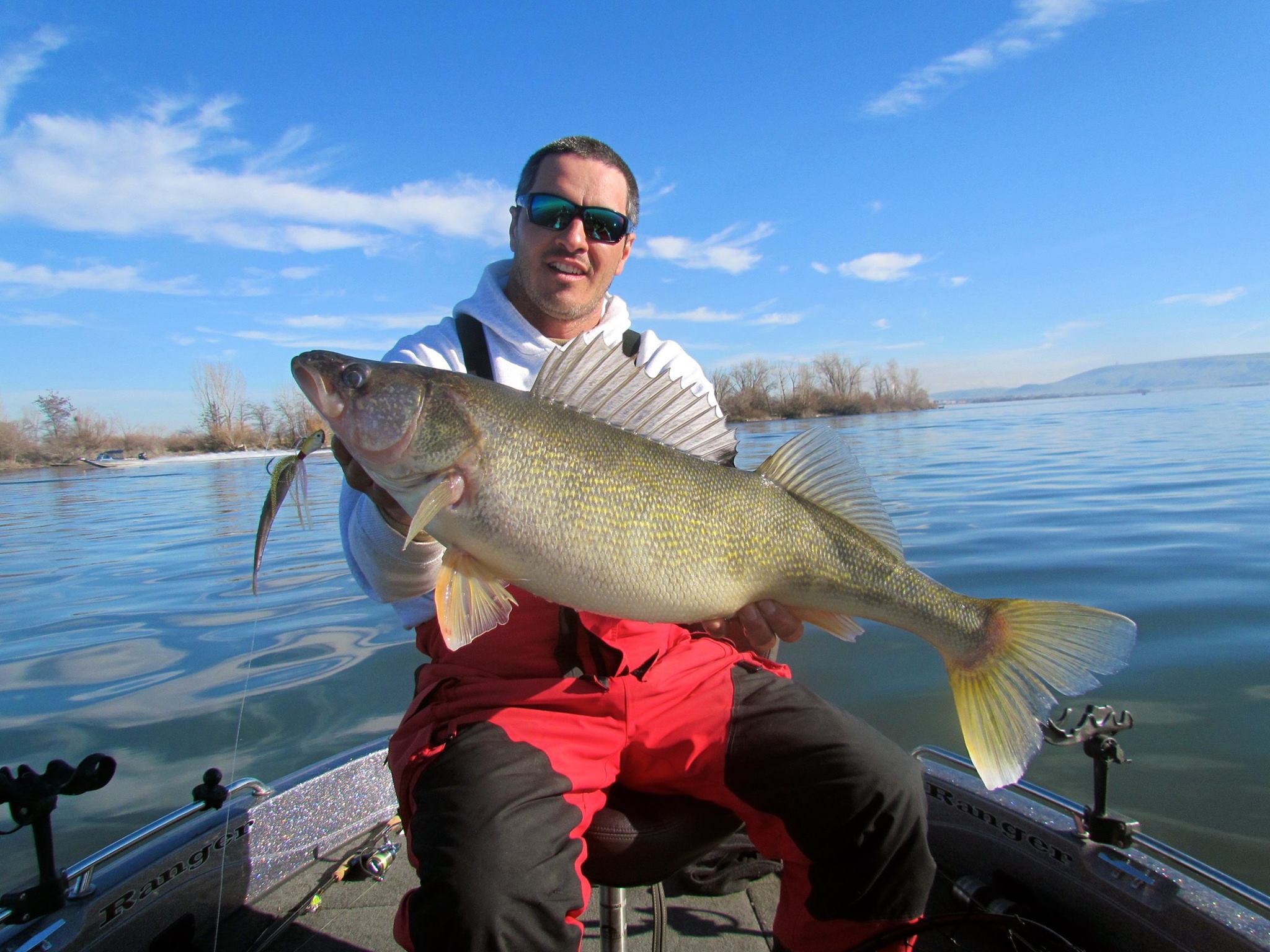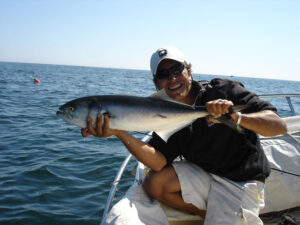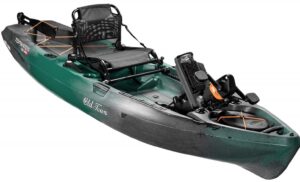When it comes to fishing, walleye is a highly sought-after species known for its delicious taste and challenging behavior. While walleye can be found in various bodies of water, river fishing for walleye offers a unique experience that combines the thrill of angling with the beauty of nature. In this article, we will explore the ins and outs of river fishing for walleye, providing you with valuable insights, tips, and techniques to make your next fishing trip a memorable one.
The Fascinating World of River Fishing Walleye
Before we delve into the specifics of river fishing for walleye, let’s take a moment to appreciate the fascinating characteristics of this species. Walleye, scientifically known as Sander vitreus, is a freshwater fish that belongs to the perch family. They are widely distributed across North America, making them a popular target for anglers of all skill levels.
One of the most intriguing aspects of walleye is their unique eyes. These fish have a reflective layer called the tapetum lucidum, which enhances their vision in low-light conditions. As a result, walleye are known for their ability to feed actively during dawn and dusk, earning them the nickname “the fish that sees in the dark.”
Walleye are typically found in rivers, lakes, and reservoirs with clear, cool water. While they can adapt to various habitats, they prefer areas with rocky or gravel bottoms, submerged vegetation, and structures such as fallen trees or underwater ledges. Understanding their preferred habitat is crucial for a successful walleye fishing expedition.
Choosing the Right River and Timing
When planning a river fishing trip for walleye, it’s essential to choose the right river and timing. Not all rivers are created equal in terms of walleye population and accessibility. Here are some factors to consider when selecting a river:
1. Walleye Population
Research the river’s walleye population and the size of the fish it holds. Some rivers are known for their trophy-sized walleye, while others may have smaller but abundant populations. Understanding the fishery of your chosen river will help you set realistic expectations and select appropriate gear.
2. Accessibility
Consider the accessibility of the river. Look for public access points, boat ramps, or areas where you can safely wade into the water. If the river is easily accessible, it will increase your chances of finding productive fishing spots.
3. Current and Water Flow
Pay attention to the river’s current and water flow. Walleye are known to congregate in areas with moderate current and avoid strong currents. Look for sections of the river with eddies, undercuts, or slower-moving water where walleye are likely to seek shelter and ambush their prey.
4. Seasonal Patterns
Understand the seasonal patterns of the river. Walleye behavior can vary depending on the time of year. They may migrate upstream during the spawning season or move to deeper waters during hot summer months. By studying the seasonal patterns, you can target the most productive areas at different times of the year.
Gearing Up for River Fishing Walleye
Now that you have chosen the perfect river for your walleye fishing adventure, it’s time to gear up. Having the right equipment and tackle can significantly increase your chances of success. Here’s what you’ll need:
1. Fishing Rod and Reel
Choose a fishing rod and reel combination that is suitable for walleye fishing in rivers. A medium to medium-heavy spinning rod with a fast action is a popular choice among anglers. Pair it with a high-quality spinning reel that has a smooth drag system.
2. Fishing Line
Select a fishing line that matches the rod and reel you are using. Monofilament or fluorocarbon lines in the range of 8-12 lb test are commonly used for walleye fishing. These lines offer good sensitivity and allow for precise lure control.
3. Terminal Tackle
Stock up on a variety of terminal tackle, including hooks, sinkers, swivels, and leaders. For walleye fishing, consider using live bait rigs, jig heads, and spinner rigs. Experiment with different sizes and colors to determine what works best in your chosen river.
4. Lures and Baits
Walleye can be enticed by both artificial lures and live baits. Some popular lures for river fishing walleye include crankbaits, jigs, soft plastics, and spinners. Live baits such as minnows, leeches, and nightcrawlers are also effective in attracting walleye. It’s a good idea to have a mix of both in your tackle box.
5. Fishing Accessories
Don’t forget to pack essential fishing accessories such as a landing net, pliers, line cutters, and a tackle box to keep your gear organized. These accessories will come in handy during your fishing trip and ensure a smooth angling experience.
Techniques for River Fishing Walleye
Now that you are properly equipped, let’s dive into some techniques that can help you catch more walleye in rivers. Remember, walleye can be finicky at times, so it’s crucial to be versatile and adapt your approach based on the conditions and fish behavior.
1. Drifting and Bottom Bouncing
Drifting and bottom bouncing is a widely used technique for river fishing walleye. It involves allowing your bait or lure to drift naturally with the current while maintaining contact with the bottom. Use a drift rig or a bottom bouncer to keep your bait at the desired depth. This technique is particularly effective when targeting walleye in deeper holes or along underwater structures.
2. Casting and Retrieving
If you are fishing in shallower areas or targeting walleye near shore, casting and retrieving is a productive technique. Cast your lure or bait upstream and retrieve it back, mimicking the movement of a prey fish. Vary your retrieval speed and experiment with different lures to find the most enticing presentation for the walleye.
3. Jigging
Jigging is a versatile technique that can be effective in various river fishing scenarios. It involves vertically presenting a jig tipped with live bait or a soft plastic lure and imparting subtle movements to attract walleye. Pay attention to the bottom structure and use your rod to create enticing movements that mimic the behavior of prey fish.
4. Trolling
Trolling is an effective technique for covering a large area of the river and locating active walleye. Use a trolling motor or a boat with an outboard motor to move at a slow and steady pace while dragging a lure or bait behind you. Experiment with different depths and lure combinations to find where the walleye are feeding.
Tips and Tricks for River Fishing Walleye
Now that you have a good understanding of the techniques, here are some additional tips and tricks to enhance your river fishing walleye experience:
1. Pay Attention to Water Temperature
Walleye are sensitive to water temperature and may change their behavior accordingly. In colder water, they tend to be more sluggish and prefer slower presentations. As the water warms up, they become more active and may chase faster-moving lures. Keep an eye on the water temperature and adjust your fishing approach accordingly.
2. Be Stealthy
Walleye have excellent eyesight and can be easily spooked by excessive noise or vibrations. When fishing in rivers, approach your fishing spots quietly and avoid unnecessary disturbances. Opt for lighter fishing lines and use fluorocarbon leaders to make your presentation more subtle.
3. Use Natural Colors
While walleye can be attracted to a wide range of lure colors, natural colors tend to be more effective in river fishing. Stick to baitfish imitations and earthy tones such as greens, browns, and whites. These colors closely mimic the natural prey of walleye and increase your chances of enticing a strike.
4. Stay Mobile
Don’t be afraid to move around and explore different areas of the river. Walleye can be highly mobile and may change their feeding patterns throughout the day. If you haven’t had any luck in a particular spot, try a different location or change your fishing technique. Adaptability is key to success in river fishing for walleye.
5. Practice Catch and Release
Walleye populations in some rivers may be vulnerable to overfishing. To ensure the sustainability of the fishery, consider practicing catch and release whenever possible. If you do keep some walleye for a meal, adhere to local regulations regarding size limits and bag limits.
Conclusion
River fishing for walleye offers anglers a thrilling and rewarding experience. By understanding the unique characteristics of walleye, choosing the right river and timing, and employing effective techniquesand strategies, you can increase your chances of a successful fishing trip. Remember to gear up with the appropriate equipment and tackle, and be prepared to adapt your approach based on the river conditions and walleye behavior.
Drifting and bottom bouncing, casting and retrieving, jigging, and trolling are all effective techniques for river fishing walleye. Each technique has its own advantages and can be used in different scenarios, so it’s important to experiment and find what works best for you.
In addition to the techniques, there are some tips and tricks that can further enhance your river fishing walleye experience. Pay attention to water temperature and adjust your presentation accordingly. Be stealthy and avoid unnecessary disturbances that could spook the walleye. Use natural-colored lures that closely mimic the prey fish. Stay mobile and explore different areas of the river to find where the walleye are feeding. And finally, consider practicing catch and release to ensure the sustainability of the walleye population.
Now that you’re armed with the knowledge and strategies for river fishing walleye, it’s time to plan your next fishing trip. Remember to research the river, choose the right gear, and be adaptable in your approach. Enjoy the thrill of angling in the beautiful rivers and savor the delicious taste of walleye. Happy fishing!
Frequently Asked Questions (FAQs)
1. What is the best time to fish for walleye in rivers?
The best time to fish for walleye in rivers is typically during the early morning or evening hours when they are most active. However, walleye can be caught throughout the day if you adjust your techniques and presentations accordingly.
2. What are some recommended lures for river fishing walleye?
Some recommended lures for river fishing walleye include crankbaits, jigs, soft plastics, and spinners. It’s best to have a variety of sizes and colors to match the conditions and preferences of the walleye.
3. Can I use live bait for river fishing walleye?
Absolutely! Live bait such as minnows, leeches, and nightcrawlers can be highly effective in attracting walleye in rivers. Experiment with different types of live bait to see what the walleye are most responsive to.
4. How do I locate productive fishing spots in a river?
To locate productive fishing spots in a river, look for areas with moderate current, underwater structures such as fallen trees or ledges, and changes in depth. Walleye often seek shelter and ambush their prey in these areas.
5. Are there any regulations I need to be aware of when fishing for walleye in rivers?
Yes, it’s important to be aware of and adhere to local fishing regulations regarding size limits and bag limits for walleye. Additionally, some rivers may have specific rules or restrictions in place, so it’s always a good idea to familiarize yourself with the regulations before your fishing trip.
Summary
River fishing for walleye is an exciting adventure that combines the thrill of angling with the beauty of nature. By understanding the characteristics of walleye, choosing the right river and timing, and employing effective techniques and strategies, anglers can increase their chances of a successful fishing trip. Drifting and bottom bouncing, casting and retrieving, jigging, and trolling are all valuable techniques to consider. Additionally, paying attention to water temperature, being stealthy, using natural-colored lures, staying mobile, and practicing catch and release can further enhance the experience. With the right knowledge and preparation, anglers can enjoy the excitement of river fishing for walleye and savor the reward of a delicious catch.





